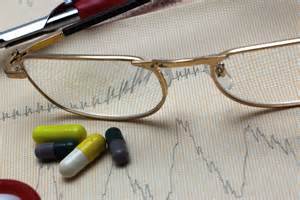Are Mammograms Safe?

|
Socrates |
- It's one of the most potent risk factors for breast cancer, and its effects are cumulative.
- This means that the damage done to the breast tissue doesn't disappear with time: Each dose of radiation to the breast adds to the last one.
- Mammograms are a significant source of radiation
- One week at a high altitude (Denver, CO) = less than I millirad
- Jet flight of 6 hours = 5 millirads
- Chest x-ray = 16 millirads (about 1 millirad reaches breast tissue)
- Smallest possible dose from a screening mammogram done with the best possible equipment = 340 millirads
Alternative Medicine has maintained for years that mammograms do far more harm than good. Their ionizing radiation mutates cells, and the mechanical pressure on the breast can spread cells that are already malignant (as can biopsies). In 1995, the British medical journal, The Lancet, reported that since mammographic screening was introduced in 1970’s, the incidence of ductal carcinoma in situ (DCIS), which represents 12% of all breast cancer cases, had increased by 328% and that 200% of this increase was due to the use of mammography. Since the inception of widespread mammographic screening, the increase for DCIS in women under the age of 40 has risen over 3000%.
Eighty percent of the million breast biopsies performed each year in the US, because of a suspicious mammography, are negative. Why, then, does mainstream medicine keep recommending mammograms? A $100 mammogram for all 62 million U.S. women over 40, and a $1,000+ biopsy for 1- to 2-million women, is an $8 billion per year industry.
Thermography is a high technology tool that specifically measures inflammation in the body. This test is particularly good for assessing active areas of cancer cell formation. It is more effective and is significantly less invasive than mammography.
Research has shown that the major mechanism involved with all degenerative disease is inflammation. Most medical testing searches for disease processes that have already developed. They are looking downstream to the effect rather than upstream at the underlying cause. More advanced health care practitioners use instruments and technology that search upstream for the cause of physiological abnormalities in the body.
If you ask ten women, or men, if they are familiar with Breast Thermography, nine would say no. This is a surprising fact, since medical thermography has been in use since the early 1970’s and the modality was approved by the FDA in 1982 for breast cancer detection and risk assessment, as an adjunct to mammography.
The reason why so few people know about Breast Thermography is because the medical establishment, the American Cancer Society and most women’s organizations are still very comfortable recommending Mammography. The difference between the two modalities is profound.
Mammography is an anatomical study; it looks at anatomical changes of the breast, such as masses or lumps.
It may take up to ten years for the tumor to grow to a sufficient size to be detectable by either a mammogram or a physical examination. By that time, the tumor has achieved more than 25 doublings of the malignant cell colony and may have already metastasized.











